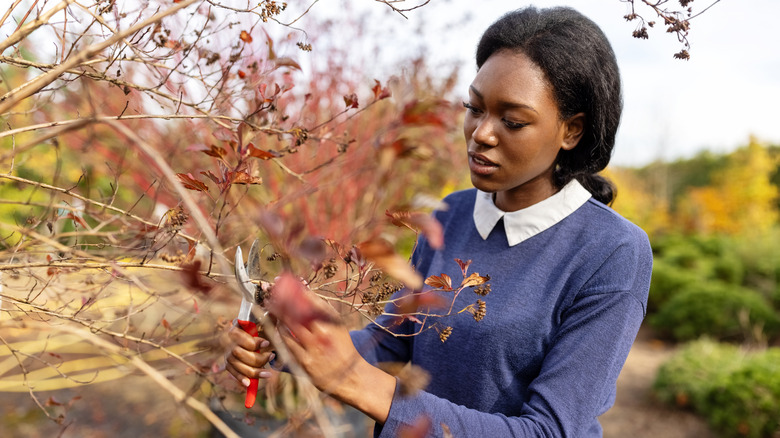Trimming Trees In The Fall - A Good Idea Or Harmful For Their Health?
Maintaining trees can be something homeowners often forget. But this fall as you work to get your garden ready for the winter, don't forget an important part of yard maintenance: trimming trees. Just keep in mind that there are caveats about pruning in the fall. Let's dig into why.
There are some advantages to cutting trees, including getting rid of diseased or dying branches that might break and clearing away parts of a tree that may have grown too close to a roof or power line. But if you're trying to decide when to prune, this can depend on the type of tree in your yard. Generally speaking, for most varieties, it's best to prune them when they're dormant — typically after all of the tree branches are bare. When every leaf lies on the ground and the weather has turned cold enough to send the tree into hibernation, then you can grab your loppers.
Never aggressively prune a tree still growing new leaves. While it may be fall on the calendar, warmer than usual weather can mean that the tree isn't yet dormant. Lopping off branches during unseasonably warm weather might prompt the tree to sprout new leaves, which aren't likely to survive plunging winter temps. So, it's doubly important to make sure temperatures stay cool for a bit before you cut. For this reason, you may want to wait until late fall or early spring to prune – when trees lie dormant.
How to properly prune your dormant trees
Whether it's late fall, mid-winter, or early spring, pruning when the tree is dormant is much safer than extensive tree pruning in the summer. Over-enthusiastic pruning in summer can actually spread disease between trees, which you definitely don't want. In warmer months, only cut dead or dying branches or broken ones. For some kinds of trees, you should wait until winter or very early spring to prune them. For example, maples have a lot of sticky sap, so they should only be pruned in the dead of winter as they hibernate. Other trees, like some kinds of conifers, rarely ever need to be pruned at all, except to remove dead branches from pine trees.
Prune uniformly and to target diseased branches first. Use sharpened shears and loppers for better cuts – you might need help restoring old garden tools with WD-40. Then, make sure to trim back any branches that might be growing awkwardly across one another or that may get twisted together and cause problems later.
If you're still unsure about what to do, there's no shame in calling an arborist or tree specialist to make sure the tree is properly taken care of. You can be confident that they know their stuff if they've got an International Society of Arboriculture certification. When you're done trimming the tree this fall, think about adding in a layer of mulch around its base. Mulch can keep roots warm in the wintertime and help prevent soil erosion.

